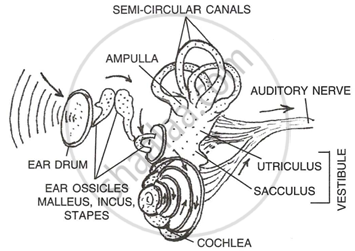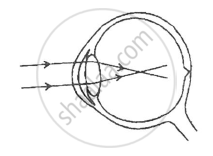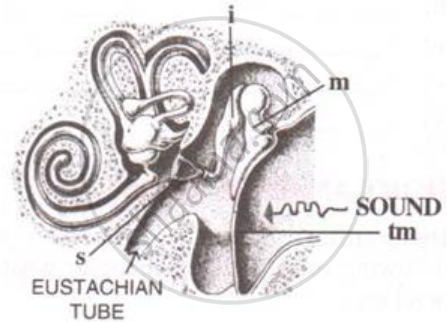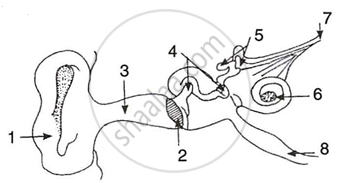Advertisements
Advertisements
Question
- Draw a neat and well labelled diagram of the membranous labyrinth found in the inner ear.
- Based on the diagram drawn above in (i), give a suitable term for each of the following descriptions:
- The structure responsible for hearing.
- The sensory cells that help in hearing.
- The membrane-covered opening that connects the middle ear to inner ear.
- The nerves that carry impulses from the ear to the brain.
- The tube which equalises the air pressure on either side of the ear drum.
Solution

-
- Cochlea
- Organ of Corti
- Oval window
- Auditory Nerve
- Eustachian Tube
RELATED QUESTIONS
Explain how the human ear works.
Which part of our body helps us in maintaining the body balance?
Lightning and thunder take place in the sky at the same time and at the same distance from us. Lightning is seen earlier and thunder is heard later. Can you explain?
State the exact location of the Ciliary body
Given below is a diagram depicting a defect of the human eye, study the same and then answer the questions that follow:

(i) Name the defect shown in the diagram.
(ii) What are the two possible that cause this defect?
(iii) Name the type of lens used to correct this defect.
(iv) With the help of a diagram show how the defect shown above is rectified using a suitable lens.
(i) Draw a well labelled diagram of the membranous labyrinth found in the inner ear.
(ii) Based on the diagram drawn above in (i) give a suitable term for each of the following descriptions :
1. The sensory cells that helps in hearing.
2. The part that is responsible for static balance of the body.
3. The membrane covered opening that connects the middle ear to the inner ear.
4. The fluid present in the middle chamber of cochlea.
5. The structure that maintains dynamic equilibrium of the body.
State the exact location of the Organ of Corti
Differentiate between Near vision and Distant vision (shape of the eye lens)
Perilymph or endolymph (Which one surrounds the organ of Corti ?)
Name the following:
The nerves which transmit impulse from ear to the brain.
Draw a neat and labelled diagram of the human ear. With the help of this diagram, explain the construction and working of the human ear.
Name the following:
Part of internal ear related to balance.
The figure below is the sectional view of a part of the skull showing a sense organ:

What are the parts labeled 'm', 'i' and 's'? What do these parts constitute collectively?
Differentiate between:
Cochlea and Concha.
State the Location:
Semicircular canals
State the functions of the following:
Semi-circular canals
The range of audible frequency for the human ear is
Select the option with incorrect identification:

The spiral organ possessing sensory cells for hearing is ______.
The figure given below shows the principal parts of a human ear. Study the diagram and answer the following questions.
 |
- Label the parts 1 to 8.
- State the role of parts 6, 7 and 8.
- Why is it harmful to use a sharp object to remove ear wax? Mention the number and name of the part involved.
